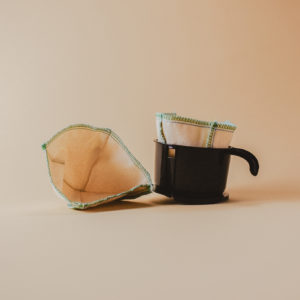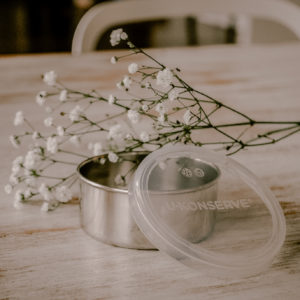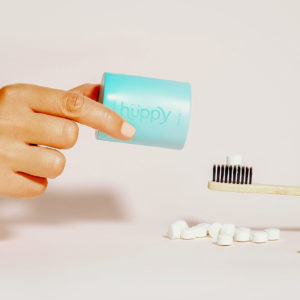For many zero-waste followers, cutting out or properly recycling plastics in is among the main goals in creating a more sustainable lifestyle. However, this is no easy task, with everything from the food we eat to the products we buy wrapped in plastic, and then wrapped in plastic again! In fact, in 2015, it was estimated that over 320 million tons of polymers, excluding fibers for clothing were manufactured, leaving consumers with little choice but to “buy in” to plastic consumption.
However, while education and awareness are the first steps to reducing plastic consumption, and while it may be easier to avoid completely the packaging sector, which has by far the highest percentage of products that contain plastic, by buying in bulk or from zero-waste stores, there’s still plenty of polymers hiding in plain sight. Here then, we look at the hidden products that contain plastic and how you can avoid them with zero-waste alternatives.
Tea Bags & Coffee Filters
While many teabag manufacturers have pivoted to cardboard packaging (even if it is again wrapped in plastic), it’s the teabags themselves that contain the hidden element. Often, the bags are heat-sealed using polypropylene, meaning they won’t break down in compost and will eventually degrade into microplastics. Manufacturers are working to reduce the percentage of their products that contain plastic, but for now, expect your teabag to be environmentally unfriendly.
Coffee filters often suffer the same problems, using polypropylene as a gluing agent and other types of cellulose-based filter paper.
Zero-Waste Alternative to Tea Bags
Loose leaf tea bought in bulk, along with a traditional tea strainer or more modern tea infuser is the zero-waste way. Alternatively, keep your eyes peeled to the packaging of your favorite brands to learn when they finally make the switch to naturally biodegradable bags.
For coffee, plastic-free reusable coffee filters are available, which not only ditch the plastic, but all of the other associated waste of single-use filters which pile up at the end of the day! Made from 100% organic cotton, users have even reported a better tasting brew!
Chewing Gum
Well, after a few minutes of mastication gum tends to feel like plastic in your mouth anyway—so perhaps it’s no surprise that it actually contains the stuff. Chewing gum manufactures are notoriously secretive about their ingredients, labeling their products as “gum-based”, however, research has uncovered that certain gums contain polyethylene and Polyisobutylene—a plastic used within innertubes for tires.
Zero-Waste Alternative to Chewing Gum
Zero-waste alternatives to chewing gum are few and far between. Ancient civilizations tended to rely on naturally grown chewing sticks for teeth hygiene, however, there are now a few plastic-free gum options available. True Gum from Scandinavia is one option, while Glee gum has plenty of great flavor closer to home.
Drinks & Food Cans
While we already know the benefits of recycling aluminum over plastics, the sad fact is that both drinks cans and food cans usually contain a plastic liner that makes the process more difficult, and of course, cannot itself be recycled. Mostly, the plastic used is epoxy bisphenol-A or BPA—which has recently been linked to a host of health issues when in contact with food or drink.
Zero-Waste Alternative to Drinks & Food Cans
This is a difficult one. Best is to buy dry food using a reusable container that can be rehydrated in bulk, and buying fresh produce wherever possible. When it comes to soda, glass bottles are probably your best chance of avoiding most plastics, although even the lids are lined with Low Density Polyethylene (LDPE).
Toothpaste
Unless you’ve already switched to chewing sticks, you’ll already be aware of the problematic nature of toothpaste packaging, containing multiple plastics and sometimes even metal. However, toothpaste itself also often contains plastics. Some countries have banned the use of microbeads in all cosmetics, including the US with the Microbead-Free Waters Act of 2015, however, other types of microplastic can still be found in both toothpastes and mouthwashes. These include Carbomer, PVP, Poloxamer 407, PEG-32, and PEG-12.
Zero-Waste Alternatives to Toothpaste
If you want to avoid plastics entirely, both with packaging and what’s in your toothpaste, then toothpaste tablets are a good option. Usually featuring sustainable and reusable packaging in card, glass, or metal, the aim is to refill your container using refill packs that also offer less waste.
Sunscreen
Again, exempting the plastic packaging for now, you might be surprised to hear that, despite the microplastics ban in the US, sunscreens can still contain between 10,000,000,000,000 and 100,000,000,000,000 plastic particles in one bottle. This is because the Microbead-Free Waters Act only accounted for microbeads in “rinse-off” products, and since sunscreen is a “leave-on” product, the manufacturers have managed to sidestep the law.
Zero-Waste Alternatives to Sunscreen
Natural sunscreens often made using beeswax, shea butter, carnauba wax, or coconut oil among other ingredients are available in both vegan and non-vegan varieties and do not contain any types of plastic. You can check out a list of our favorites here.
Wet Wipes
Any zero-waster worth their salt will already have switched to reusable alternatives when it comes to wet wipes, however, if you haven’t then there’s not only the single-use factor and plastic packaging to consider. Wet wipes themselves generally contain, including PET, polypropylene, and cotton woven with plastic resins. Today, many manufacturers and retailers are working towards phasing these types of wipes out, but in the end, switching to a reusable version is better.
Zero-Waste Alternatives to Wet Wipes
Reusable paper towels, reusable make up wipes, and reusable baby wipes can all fill in for the plastic infused wet wipe. Plus, You’ll be able to ditch all that plastic packaging that comes along with standard wet wipes.
Receipts
Believe it or not, receipts contain plastics, or at least a critical ingredient in the manufacture of plastics. Here, we’re back to the forever chemical BPA, as bad for your health as it is your compost pile, and definitely not recyclable. BPA is used in the manufacture of thermal paper, the most common type of receipt in retail stores today, and while a ban on these types of receipts may happen in the near future, its likely to take a while for stores to adjust.
Zero-Waste Alternatives to Receipts
Old style receipts that use simple, biodegradable inks are your only real option if you need a physical receipt. Alternatively, switching to online purchasing or opting for virtual receipts that are being introduced in some stores may start to become more popular.
Wrapping Paper
Whatever the occasion, wrapping paper is ultimately wasteful. However, if a gift is carefully unwrapped, the paper stored, and then used again next birthday or holiday season then you’re taking a big step towards your zero-waste goals. Sadly, this is less true when the wrapping paper contains plastic, as not only will it need to be disposed of at the end of its lifecycle but its also likely to shed microplastics the more it is used.
Zero-Waste Alternatives to Wrapping Paper
Let’s face it, it’s the thing inside that counts, so using old newspapers or magazines is a great way to zero waste your gift wrapping. You could even try recycling old paper to make your own wrapping paper, fulfilling two zero-waste jobs at once.

